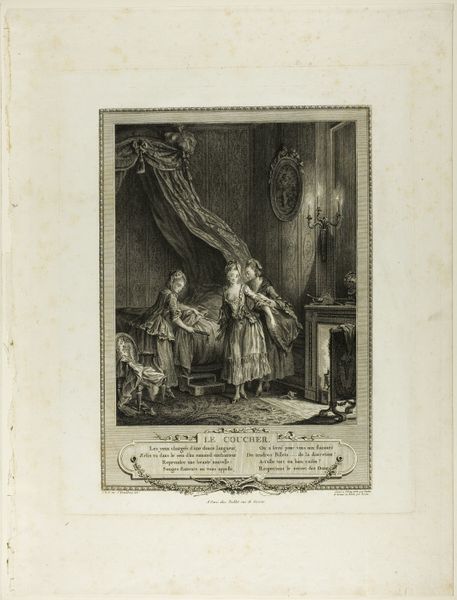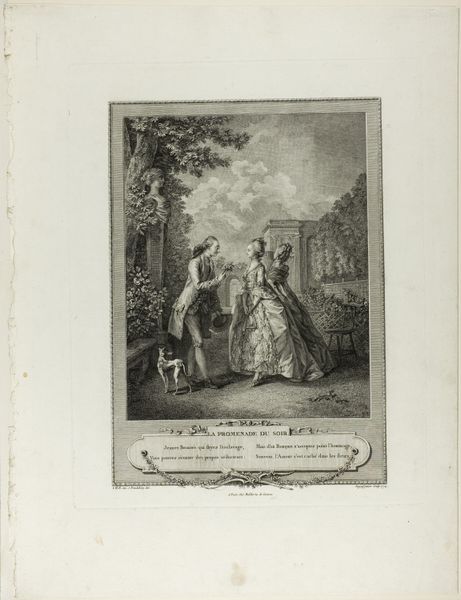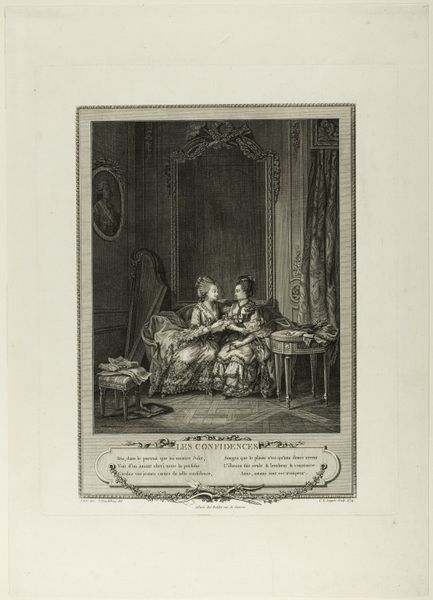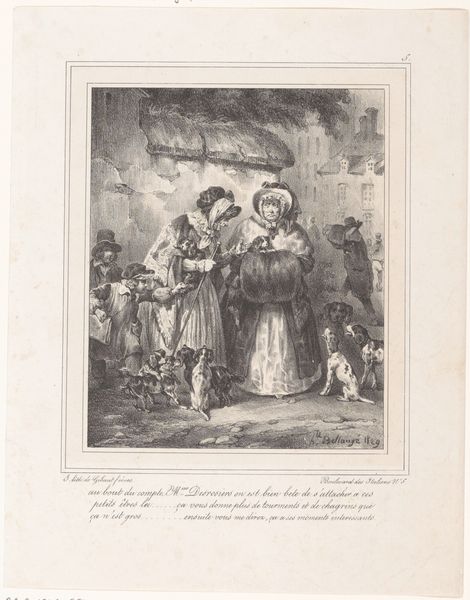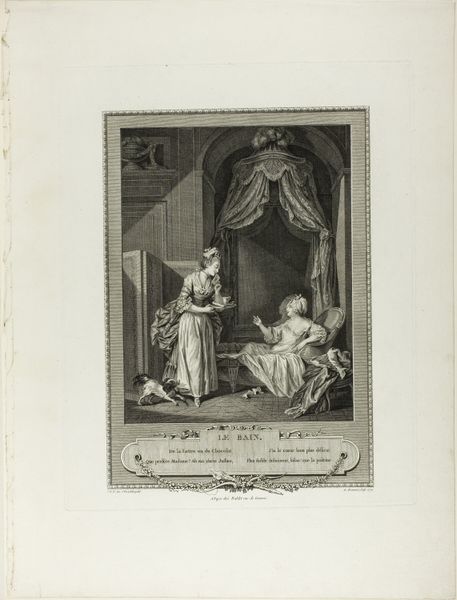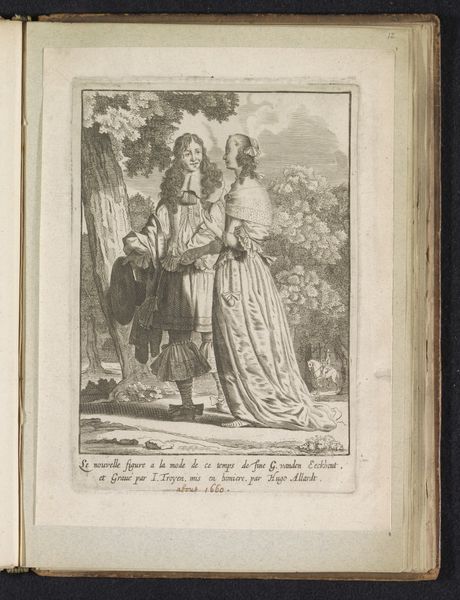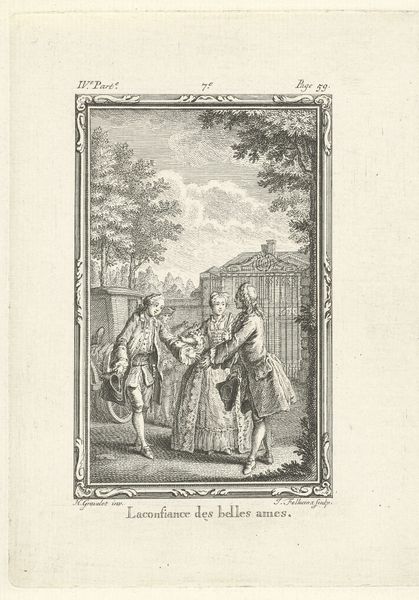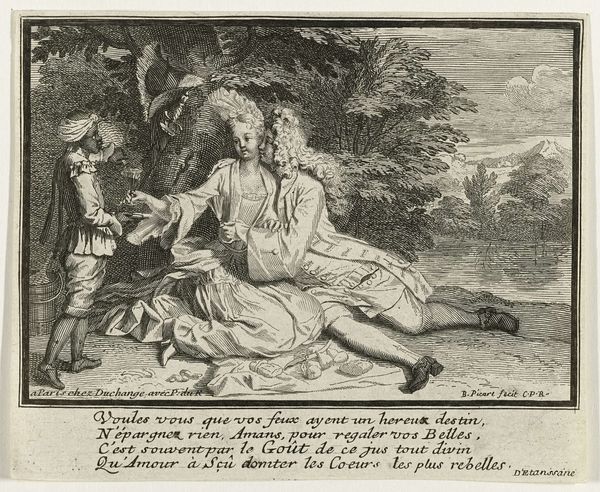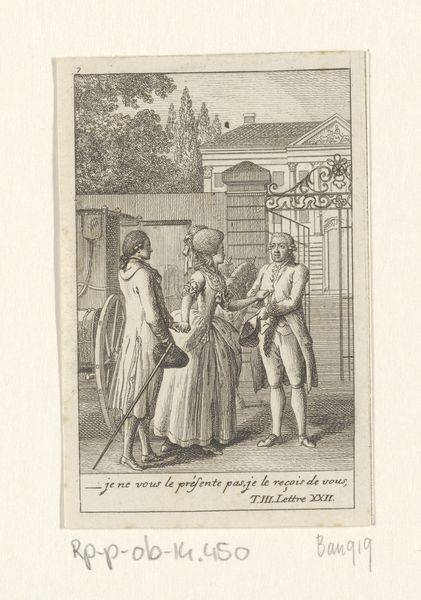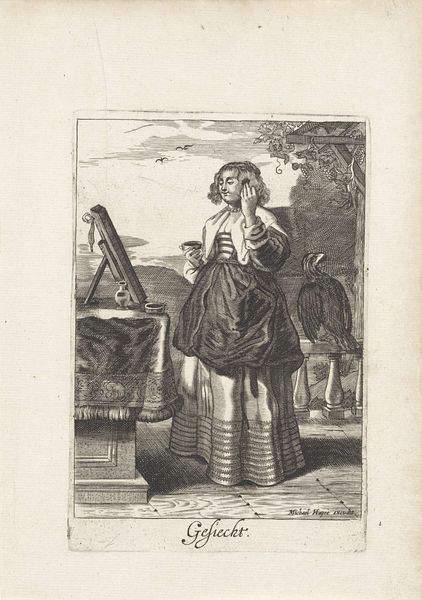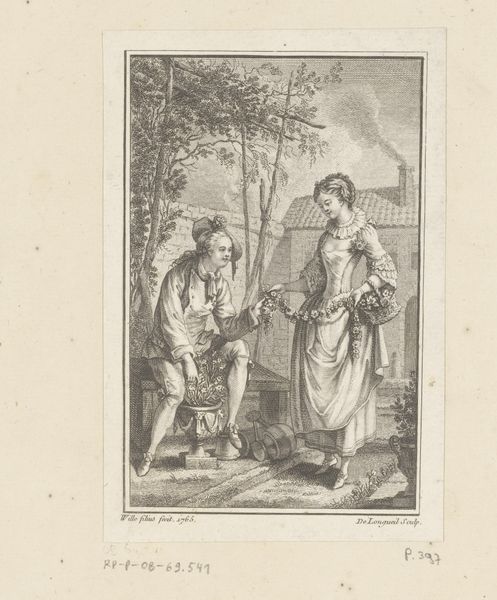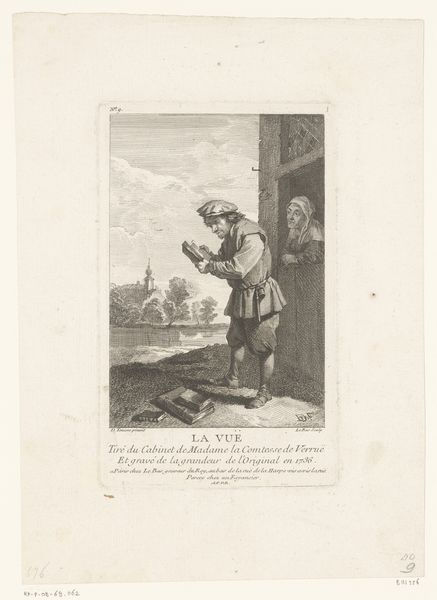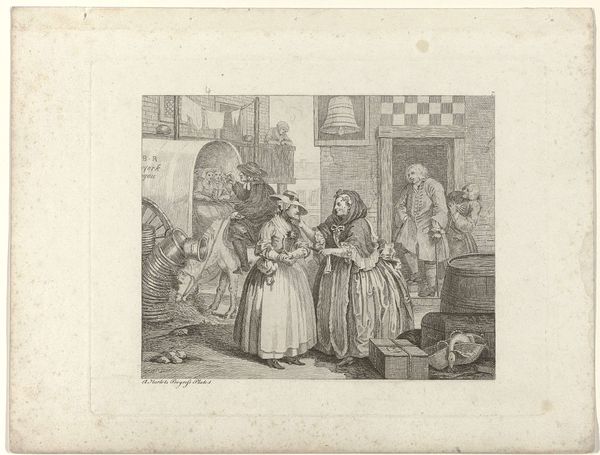
Morning Walk, from Monument du Costume Physique et Moral de la fin du Dix-huitième siècle 1774
0:00
0:00
drawing, print, etching, paper
#
drawing
#
neoclacissism
# print
#
etching
#
figuration
#
paper
#
france
#
genre-painting
#
history-painting
Dimensions: 282 × 227 mm (image); 408 × 327 mm (plate); 547 × 412 mm (sheet)
Copyright: Public Domain
Curator: Let’s examine "Morning Walk, from Monument du Costume Physique et Moral de la fin du Dix-huitième siècle", an etching by Charles Louis Lingée from 1774, now residing here at the Art Institute of Chicago. It depicts a fashionable scene, etched with incredible detail. What's your initial take? Editor: Immediately, I’m struck by the sharp contrast it presents—an elder gentleman seemingly caught off guard by the gaiety of two elaborately dressed women, alongside a lady bearing flowers. There's an element of almost uncomfortable voyeurism implied in their interaction. Curator: Absolutely. This print series was meant to document the physical and moral costumes, the habits and lifestyles, of the late 18th century. The emphasis here isn't just on clothing, but also on capturing the spirit of the time—the shifting social dynamics. Editor: And it does this very effectively. Look at how the women dominate the scene, their large hats and extravagant gowns embodying wealth and privilege. Yet, there's also an underlying artificiality, a performance inherent in their dress and demeanor. This, to me, speaks volumes about the period's gender politics. Curator: Precisely. Etchings like these played a crucial role in disseminating images and shaping perceptions across Europe. It influenced fashion and ideas about what was "correct" or desirable in behavior and attire. It standardized trends. Editor: Yet, it's essential to also acknowledge the exclusivity and social critique embedded within such images. What about those who couldn’t afford to partake in this culture of leisure and extravagance? How would they have viewed this portrayal of elite life? Curator: A pertinent question. These images often reinforced social hierarchies. Nevertheless, they provide us with invaluable insights into the past, inviting us to consider how representation and reality intersect. Editor: They force us to reckon with these complexities. Art historical works can, at their very best, confront historical power dynamics, raising awareness about overlooked voices and marginalization. It makes for much-needed conversations. Curator: Well, examining Lingée’s etching, then, takes us on a journey into the very heart of a fascinating era, brimming with elegance, complexity, and unresolved contradictions. Editor: It also provides some relevant connections for viewers to reflect on as we contemplate present realities of beauty and power.
Comments
No comments
Be the first to comment and join the conversation on the ultimate creative platform.
